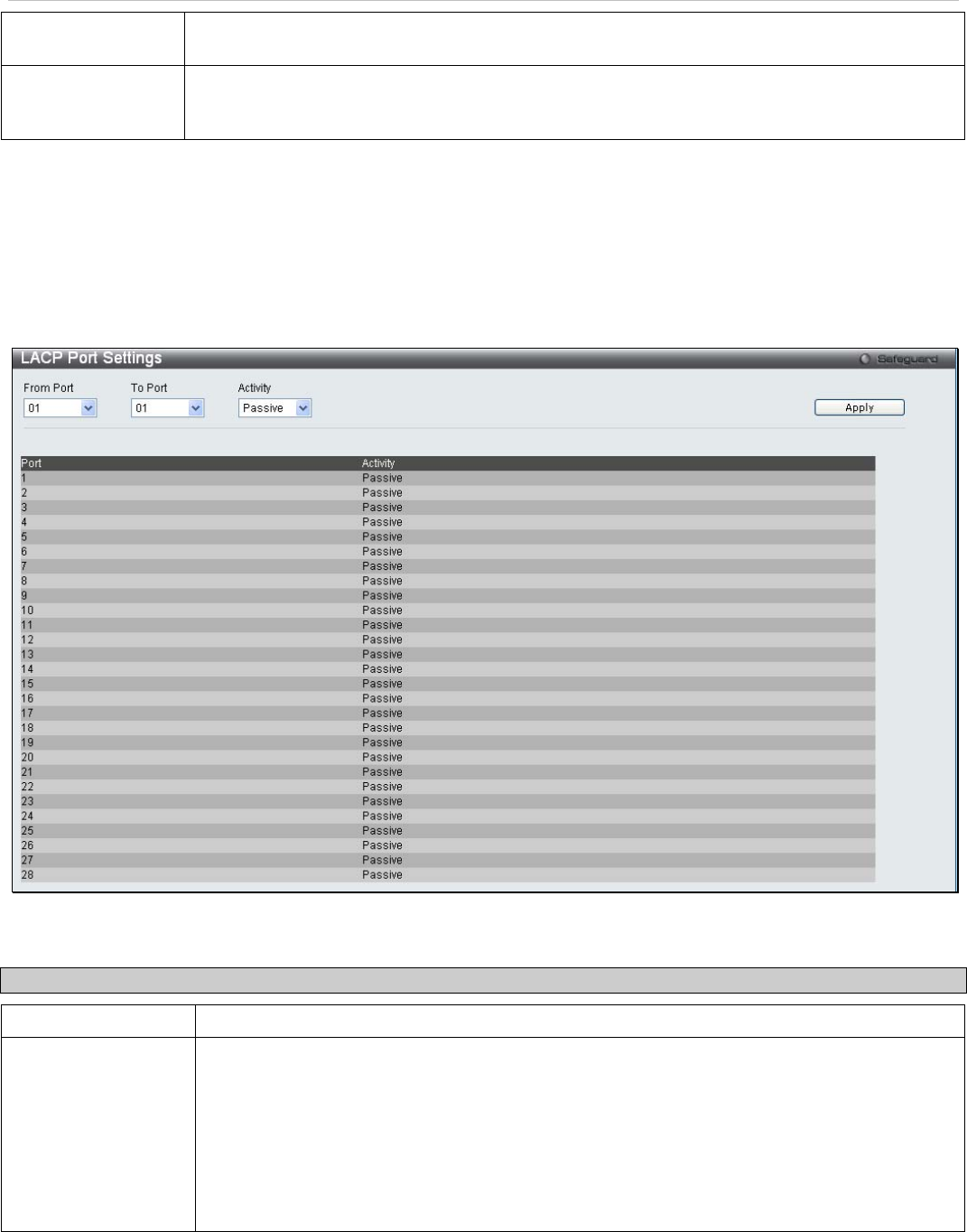
xStack
®
DES-3200-10/18/28/28F Layer 2 Ethernet Managed Switch User Manual
(Member) Ports
Choose the members of a trunked group. Up to eight ports per group can be assigned to a
group.
Flooding Ports
These ports are designated for flooding broadcast, multicast, and DLF (unicast Destination
Lookup Fail) packets from the CPU in a trunk group. The port is defined by software and
doesn’t actually exist in the hardware.
Click Apply to implement changes made.
LACP Port Settings
This window is used to create port trunking groups on the Switch. The user may set which ports will be active and
passive in processing and sending LACP control frames.
To view this window, click L2 Features > LACP Port Settings:
Figure 3 - 22. LACP Port Settings window
The following fields can be set
Parameter Description
From Port/To Port
A consecutive group of ports may be configured starting with the selected port.
Activity
Active - Active LACP ports are capable of processing and sending LACP control frames. This
allows LACP compliant devices to negotiate the aggregated link so the group may be
changed dynamically as needs require. In order to utilize the ability to change an aggregated
port group, that is, to add or subtract ports from the group, at least one of the participating
devices must designate LACP ports as active. Both devices must support LACP.
Passive - LACP ports that are designated as passive cannot initially send LACP control
frames. In order to allow the linked port group to negotiate adjustments and make changes
dynamically, one end of the connection must have "active" LACP ports (see above).
Click Apply to implement changes made.
76


















